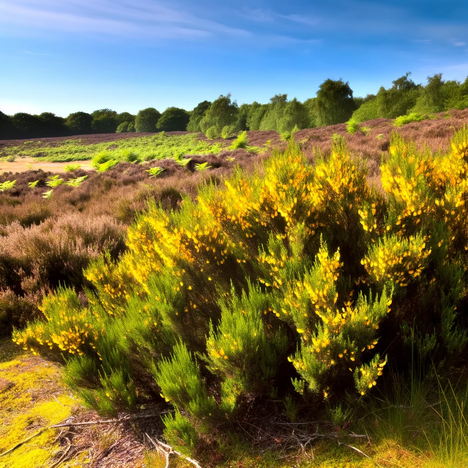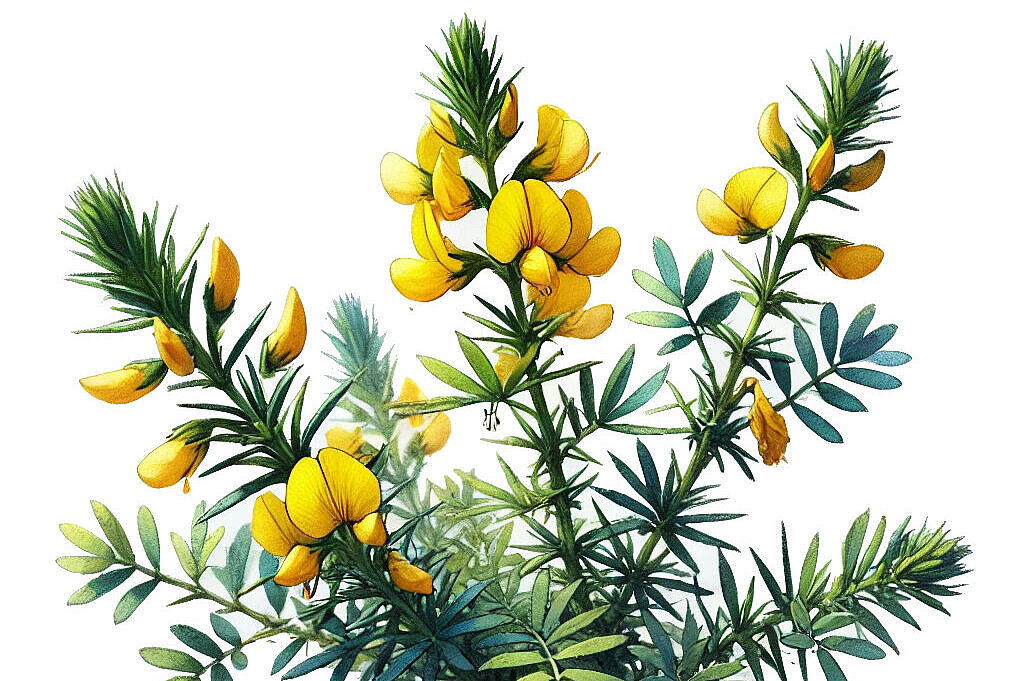Broom

What is broom?
Broom broom (Cytisus scoparius) is a flowering plant that is native to Europe and has spread to various parts of the world. It is known for its bright yellow flowers and is often planted for its decorative beauty and for ground cover. Historically, broom has been used in folk medicine to treat a variety of ailments, but its use in dogs requires a deep understanding of the plant and its effects.
Benefits of broom
Natural medicine
In traditional medicine, broom has been used to treat heart problems, high blood pressure and as a diuretic. The plant contains various bioactive compounds, including alkaloids such as sparteine, which can have potential therapeutic effects.
Anti-inflammatory properties
Some studies suggest that extracts of broom may have anti-inflammatory properties, making it a potential option for the treatment of inflammation and pain in dogs.
Disadvantages and risks
Toxicity
Arguably the most significant disadvantage of broom is its potential toxicity. The plant contains alkaloids that can be toxic to dogs (and humans), especially if consumed in large quantities. Symptoms of poisoning can include nausea, vomiting, diarrhea, heart problems and even death in severe cases.
Lack of scientific research
There is a significant lack of scientific studies on the safety and efficacy of broom in dogs. Without solid research, it is difficult to weigh the potential benefits against the risks and determine a safe dosage.
Interactions with medications
Broom broom may interact with certain medications, especially those that affect the cardiovascular system. If your dog is already taking medication, the introduction of broom could cause unpredictable and potentially dangerous interactions.
While finding natural ways to support your dog's health is commendable, it's important to be cautious and do thorough research. Broom broom may be known for its medicinal properties, but its potential toxicity and lack of specific research on its use in dogs make it a risky choice.
Properties 7
Are you looking for other ingredients with a specific property?
Just click on them to find more.
If you notice any signs of hypersensitivity or poisoning in your dog, you should see your vet immediately. We are not a substitute for a vet, but we try to be as accurate as possible. Every dog reacts differently and we recommend you get a second opinion or consult your vet if in doubt.
Stay healthy and take good care of your four-legged friend!😊
Similar to Broom
Gorse is a hardy perennial plant known for its dense, green branches and bright yellow flowers. Originally native to Europe, it has spread to different parts of the world and is prized for both its...
Gorse (Genista and Cytisus) belongs to the Fabaceae (legume) family and includes various species that are native to Europe, North Africa and parts of Asia. These plants are characterized by their...
Laburnum is a genus of plants in the legume family (Fabaceae), which also includes peas and beans. There are three types of laburnum: the common laburnum (Laburnum anagyroides), the alpine laburnum...
Blackthorn (Prunus spinosa) is a plant species from the rose family (Rosaceae). It is characterized by its robust nature, can grow up to three metres tall and is particularly eye-catching during...



